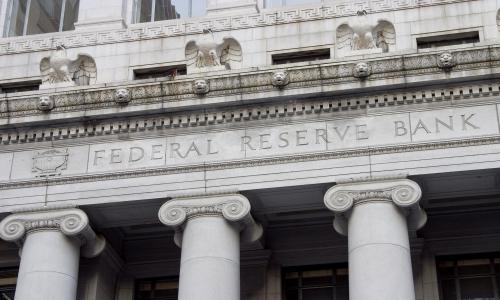As interest rates on bank products have continued to fall, it has become increasingly tempting for investors to cut the cash portion of their portfolio. But an article from Morningstar provides a reason why such a move would be a mistake. The article, entitled A Market Lacking Diversification, explains how nine of eleven asset indexes analyzed by the author Abraham Bailin have become increasingly correlated from 2002 to today. The two outliers that didn't show increasing correlation were weighted heavily with Treasury bonds.
What does this mean?
For an investor, it means that diversifying a portfolio has gotten harder than ever. Diversifying means allocating money so that if one asset falls, the other goes up - or at least doesn't fall. The idea is not to have all of your eggs in one basket. Correlation measures how closely different assets move in relation to one another. So, if the S&P 500 drops, a closely correlated index would also drop by a similar amount. To diversity a portfolio, you want correlations that are as low as possible or negative. Otherwise, when one market goes down, all of your other investments will also drop with it.
Note: A correlation number of 1 means that something perfectly mimicks the indicator it is being compared to. The closer to 1, the stronger the correlation.
Putting money into Real Estate Investment Trusts (REITs) or commodities used to be one way to diversity. Today, REITS have a .91 correlation to the S&P 500 while commodities have a .46 correlation, up from 0 ten years ago.
Why is Correlation Increasing?
Mr. Bailin hypothesizes that correlations have increased because of the growing importance of the risk on/risk off sentiment. Since the crash in 2008, investors view the market through a risk prism. When risk is perceived as low, they buy up assets that are considered more speculative. When risk is high, money flows out of these assets and into less speculative investments. Less speculative investments, like Treasuries happen to have a negative correlation to more risk based assets in the other indexes.
He also believes that correlation is increasing because more markets and indexes are being made in different asset classes. Ten years ago, trading in commodities was tiny. As more investors have piled in, the commodity index has come to reflect the sentiments of the general market.
The Growing Importance of Cash
Because cash is FDIC insured, it is the least risky of all asset classes. It also has a correlation of 0 to all other assets. Its value does not move in relation to any investment index. Therefore, if the rest of an investor's portfolio is getting increasingly correlated, it makes sense to hold cash, or to even increase the amount of money deposited into the bank. This is a phenomon we notice on BestCashCow. When there is a particularly bad day in the market, we see spikes in traffic as more investors look to protect their cash in insured banks and credit unions. As correlation has increased, it becomes even more important to place money in non-correlated holdings. An investor could put cash into Treasuries as another way to diversity their portfolio, but there is great risk in this. With interest rates so low, rates will eventually go up. When they go, Treasuries will lose value (Treasury prices move inversely to yield). It can be argued that at that point, Treasuries and the stock market will become more tightly correlated since rising rates will hurt Treasury prices as well as stock prices.
The Impact of Correlation on Your Interest Rate
Many investors already intuitively know this. Banks now hold record amounts of cash in the form of savings, CDs, and checking account. Even with the low rates, investors are parking a significant amount of money in cash. The irony is that the flight to safety has helped to bring down savings rates and CD rates. Many investors though, view banks as a safe place to park the safer portion of their portfolio until the world economy stabilizes. Any return is a bonus.













Add your Comment
or use your BestCashCow account